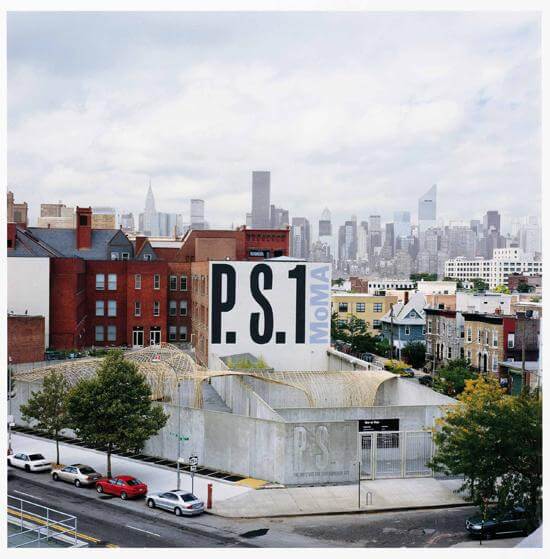By Gene Roman
The P.S.1 Contemporary Art Center in Long Island City received an early Christmas present this year.
Leif Hansen Consultants and Planners, a Danish company headquartered in Copenhagen, completed a building performance audit of the museum’s three−story building at Jackson and 46th avenues for free.
“P.S.1 was a great candidate for our gift because they don’t have a huge budget and they are close to the city,” said Flemming J. Kristensen, 38, audit project director and executive vice president of Leif Hansen’s New York office.
The city Department of Cultural Affairs helped arrange the meetings that brought P.S.1 to the attention of Leif Hansen. The Danish company offered this gift to P.S.1 to publicize the establishment of its city office and promote its holistic approach to environmental sustainability.
“Leif Hansen has the experience and knowledge about reducing energy and resource consumption that not many firms in the region possess — yet,” said Kristensen.
The Danish government expects companies like Leif Hansen to meet stricter and more demanding energy efficiency requirements than those found in the United States.
These stricter requirements developed as a result of the oil crisis in 1973, said Lars Kragh, 50, managing director and chief executive officer of the company’s 300−person office in Copenhagen. The crisis awakened the Danish government and its citizens to the risks inherent in continued dependence on foreign oil after the 1973−74 Arab oil embargo triggered a quadrupling of world oil prices.
“In 1973, the government outlawed the use of cars on Sunday for the entire year except for police and fire vehicles,” Kragh recalled. “I was 14 or 15 at the time and this was an eye−opener for my generation. It helped to teach us everything we have learned about energy savings and sustainability.”
A building performance audit led by Leif Hansen reviews a building’s consumption of electricity, gas, oil, heating, cooling and potable water, storm water runoff and the potential reuse of resources.
“We seek to integrate renewable energy measures like wind power into all of our proposals,” said Kristensen. “We also calculate the payback time for the investment, the change in energy consumption and the impact on the emission of greenhouse gases like carbon dioxide, methane and nitrous oxide.”
From Aug. 18−21, Leif Hansen reviewed the original architectural building plans of PS 1, completed a desktop computer study of the same drawings, walked through the entire facility from the roof down to the basement and interviewed operations and maintenance staff.
“It’s important to collect the feedback of the people who actually run the building on a daily basis,” said Kristensen. “It would be stupid not to incorporate their experiences and suggestions.”
This overseas private company and local nonprofit arts center met through the city DCA.
With the help of the Danish Consul’s New York office, they arranged a meeting with Laurie Kerr of the Mayor’s Office of Long−Term Planning and Sustainability. Kerr then introduced Leif Hansen’s staff to Louise Woehrle, the chief contracting officer for the DCA, according to Kristensen.
The department helped Leif Hansen to identify a cultural institution in the city that would benefit from a free building performance audit.
The department scheduled meetings for Leif Hansen with staff from the Museum of the City of New York, Carnegie Hall and the Bronx Museum of Art.
“We pitched them our offer, but they all had energy audits in progress already,” Kristensen said.
A meeting was finally arranged with the leaders of P.S.1, who accepted the gift.
DCA Commissioner Kate Levin expressed pride in her agency for arranging the meetings that produced an in−kind contribution for one of the city’s cultural institutions.
“The Department of Cultural Affairs serves as a resource for many businesses and individuals who are interested in supporting the city’s nonprofit cultural organizations through pro−bono contributions.”
Leif Hansen estimates that they saved P.S.1 in the range of $18−$28,000.
The art center operates on an annual budget for fiscal year 2008 of $4.5 million. City taxpayers contributed $866,399 to support the museum this year.
Any industrial or commercial facility, school, local government, nonprofit, college or university seeking to enhance their environmental sustainability through an audit of their facilities can apply for a state−sponsored program in Albany.
The New York State Energy Research and Development Authority sponsors an audit program for organizations with annual electric bills in the range of $25,000−$75,000. The authority charges a $100 fee for groups with annual electric bills less than $25,000. Organizations that meet the basic criteria with annual electrical bills between $25,000−$75,000 pay a fee of $400.
“Leif Hansen offered to make an in−kind contribution of this energy audit to P.S.1,” said PS 1 Chief Administrative Officer Yun Joo Kang in an e−mailed message. “We were honored and excited by this opportunity to understand our building better.”




































